
Film language
Schede di sintesi - Outlines
 |
Il linguaggio cinematografico Film language Schede di sintesi - Outlines |
| I
movimenti della macchina da presa "Cosa di maggiore importanza, la macchina da presa in movimento possiede un dimensione etica intrinseca. Può essere utilizzata essenzialmente in due modi diversi ... o per seguire il soggetto o per modificarlo. La prima alternativa enfatizza fortemente la centralità del soggetto del film; la seconda sposta l'interesse dal soggetto alla macchina da presa, dall'oggetto al cineasta. Come ha ha fatto notare André Bazin, queste sono questioni etiche, poichè determinano i rapporti umani tra artista, soggetto e osservatore." James Monaco, Leggere un film, Zanichelli, Bologna 2002. Rispetto alla posizione fissa degli esordi del cinema, la mdp è oggi in grado di eseguire un'estrema varietà di movimenti, anche molto complessi, con grande fluidità e precisione. |
Camera movements "More important, the moving camera has an inherent ethical dimension. It can be used in two essentially different ways ... either to follow the subject or to change it. The first alternative strongly emphasizes the centrality of the subject of the film; the second shifts interest from subject to camera, from object to filmmaker. As André Bazin has pointed out, these are ethical questions, since they determine the human relationships among artist, subject, and observer." James Monaco, How to read a film, Oxford University Press, New York 2000. Compared with its fixed position at the outset of cinema, today's camera can perform an extremely wide, as well as complex, range of movements, with great fluidity and precision. |
|
Tecniche e strumenti per il movimento Nella panoramica, la mdp ruota sul suo asse verticale, in modo che l'inquadratura possa esplorare lo spazio orizzontalmente (pan), verso sinistra o verso destra, con la possibilità di compiere un intero giro a 360°. Se la mdp ruota sul suo asse orizzontale (tilt), l'inquadratura può "abbracciare" lo spazio dall'alto in basso o viceversa (inquadratura ribassata o rialzata) (si veda un'illustrazione qui). E' anche possibile combinare i due movimenti in diagonale, ottenendo così inquadrature oblique. Una panoramica estremamente rapida, che colleghi due punti nello spazio senza che siano percepibili inquadrature intermedie o, al più, facendo percepire solo una serie di rapidissime linee orizzontali, è detta a schiaffo (whip pan)(se ne veda un esempio qui, tratto dai primi tre film di Damien Chazelle). Nella carrellata, la mdp attraversa lo spazio, muovendosi in qualsiasi direzione sul terreno (tracking). L'effetto è di produrre un'inquadratura che si muove in avanti, all'indietro, o lateralmente. Così la mdp può precedere un personaggio, inquadrandolo di fronte, oppure seguirlo, inquadrandolo di spalle, o ancora lo può riprendere di lato, muovendosi in parallelo con esso (si veda un esempio qui). Anche in questo caso, sono possibili combinazioni di carrellate a precedere con carrellate a seguire, come pure carrellate in soggettiva, quando la mdp coincide con l'occhio di un personaggio in movimento. Per realizzare questi ed altri movimenti, la mdp può essere fissata su un supporto con ruote, che scorre su gomma (dolly) o su binari (track)(1), su un veicolo appositamente predisposto (camera car)(2-3), o su una gru (crane shot)(4), dall'alto della quale la mdp si può muovere verso l'alto, verso il basso o lateralmente. Effetti simili si ottengono con il cosiddetto louma, un braccio meccanico collegato ad un monitor, dal quale è possibile controllare i movimenti (5). La mdp può anche riprendere tramite un periscopio (snorkel keensworthy), o fissata ad un aereo, un elicottero o un drone (6) (sky cam). Inoltre, ormai da molti decenni si usano mdp a mano o a spalla (7) o attaccate al corpo dell'operatore (steadycam)(8), che con appropriati dispositivi assicurano la stabilità delle riprese e il controllo costante tramite un monitor. Questo "controllo remoto" è oggi grandemente facilitato dalla tecnologia digitale. Questi effetti di cambiamento dell'inquadratura si possono ottenere non soltanto con il movimento fisico della mdp, ma anche attraverso lenti o tramite effetti speciali. Ad esempio, utilizzando uno zoom, cioè una lente con una lunghezza focale modificabile durante la ripresa, si può ampliare la parte centrale di un'immagine, appiattendone i piani più lontani, cioè facendoli sembrare più vicini ai primi piani (con un effetto di teleobiettivo o zoom in), mentre, all'opposto, si può restringere la parte centrale, separando meglio i piani, cioè distanziando molto il primo piano dallo sfondo (con un effetto di grandangolo o zoom out). In questo modo la mdp rimane fissa, ma l'effetto è quello di una carrellata in avanti o all'indietro. (Si veda un esempio di "zoom in/zoom out" qui.) Anche gli effetti ottici possono essere combinati, come nel cosiddetto pan and zoom (introdotto tra i primi da Rossellini negli anni '50 del secolo scorso), che, usato al posto del montaggio per aprire o chiudere una scena, permette di realizzare, tra l'altro, lunghi piani-sequenza (long take o plan-séquence). (Si vedano un esempio da Il Messia di Roberto Rossellini (I/F 1975) qui e due esempi dalla filmografia di Hitchcock qui.) |
(1) 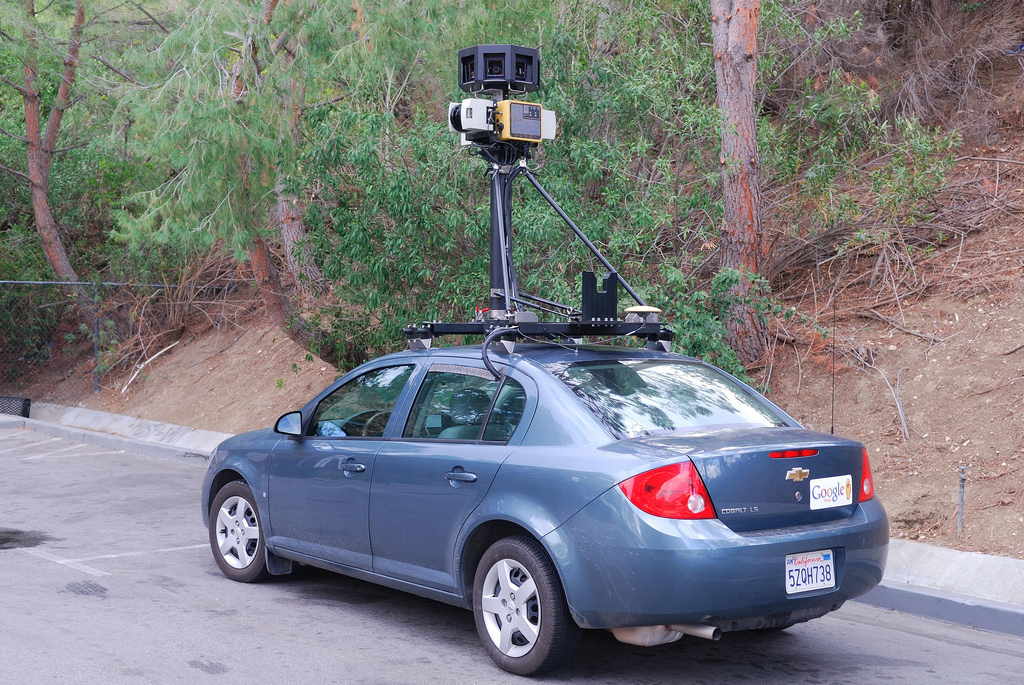 (2) 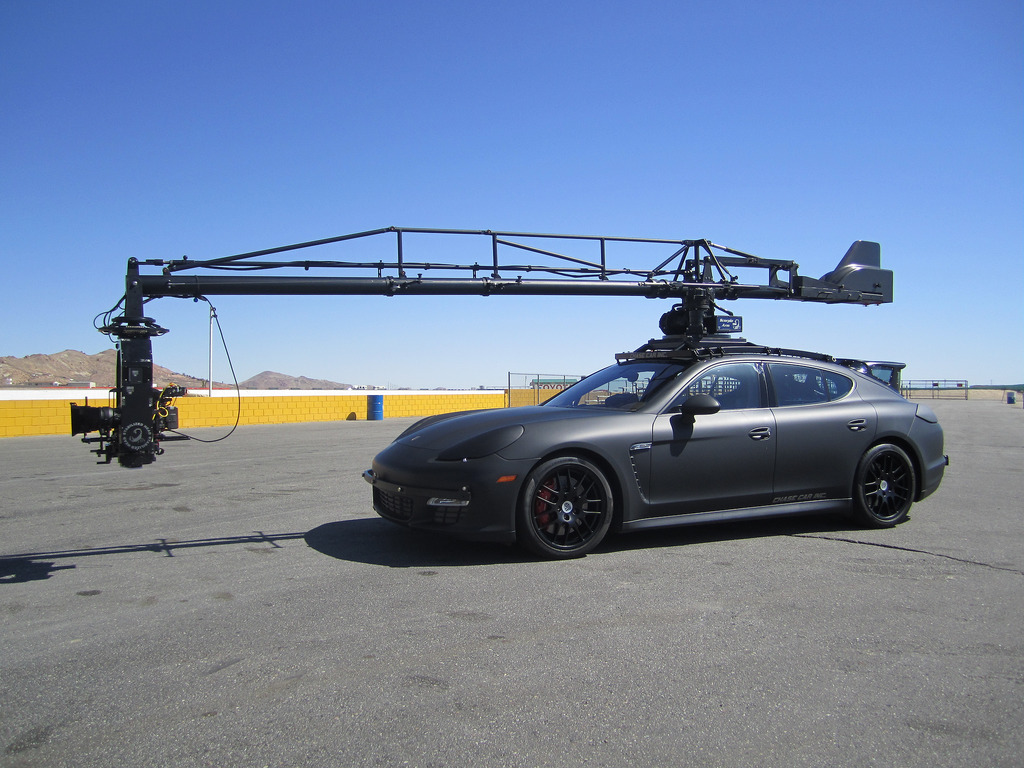 (3) 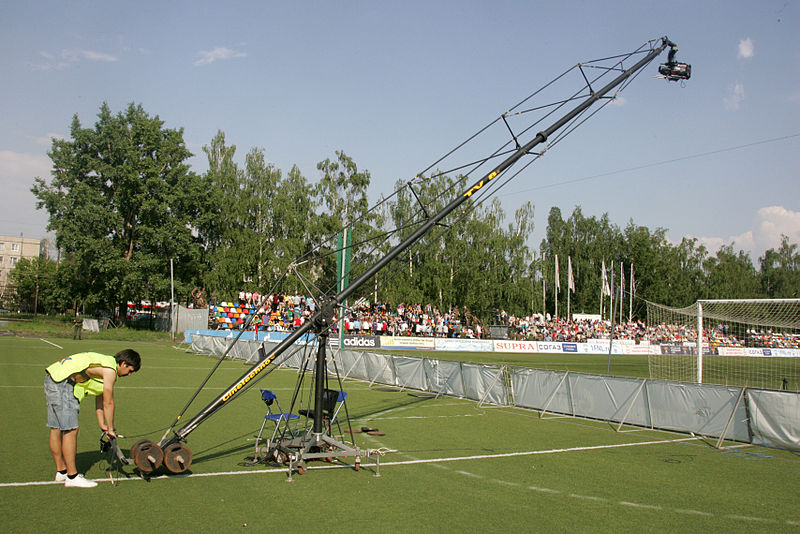 (4) (4)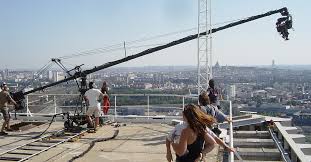 (5) 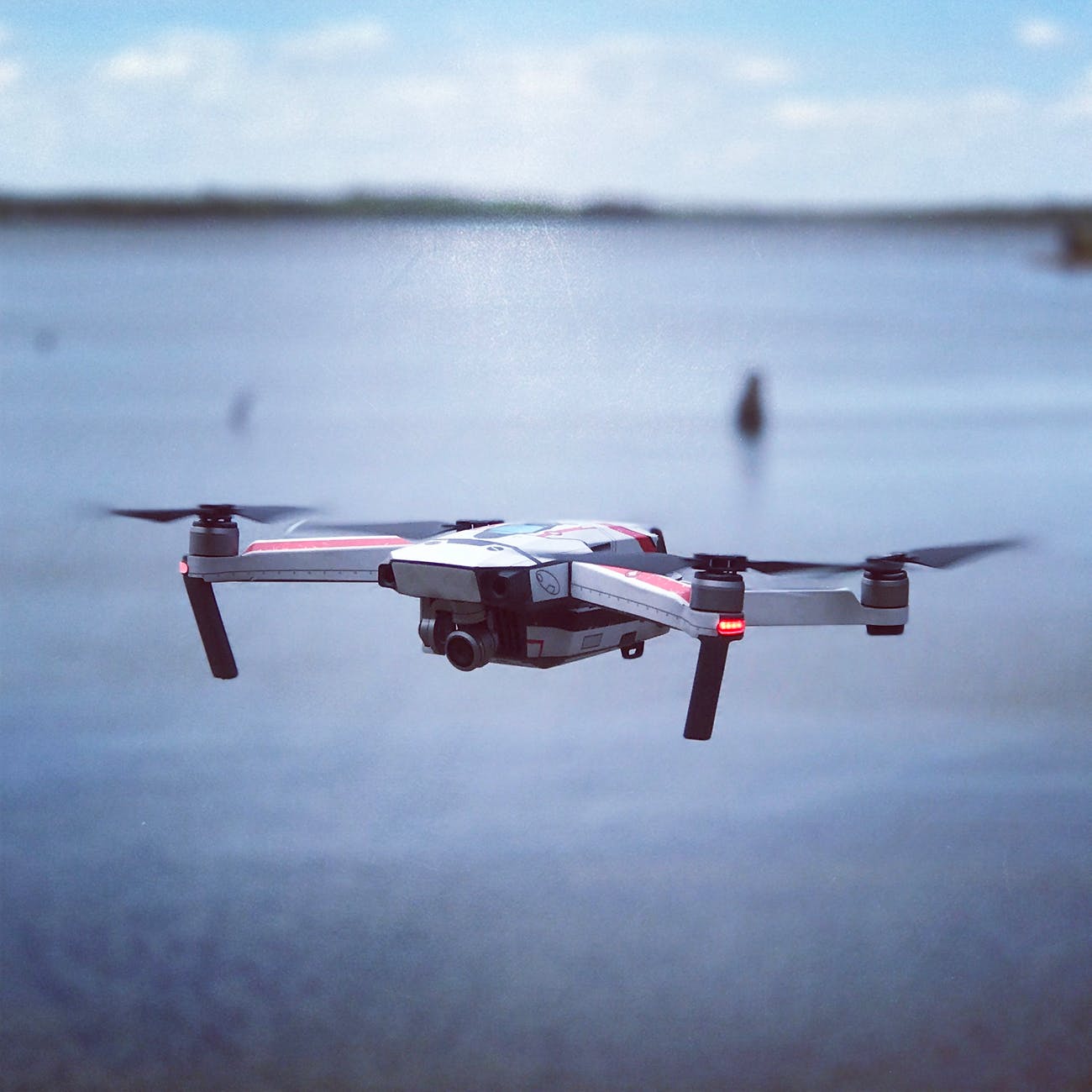 (6) 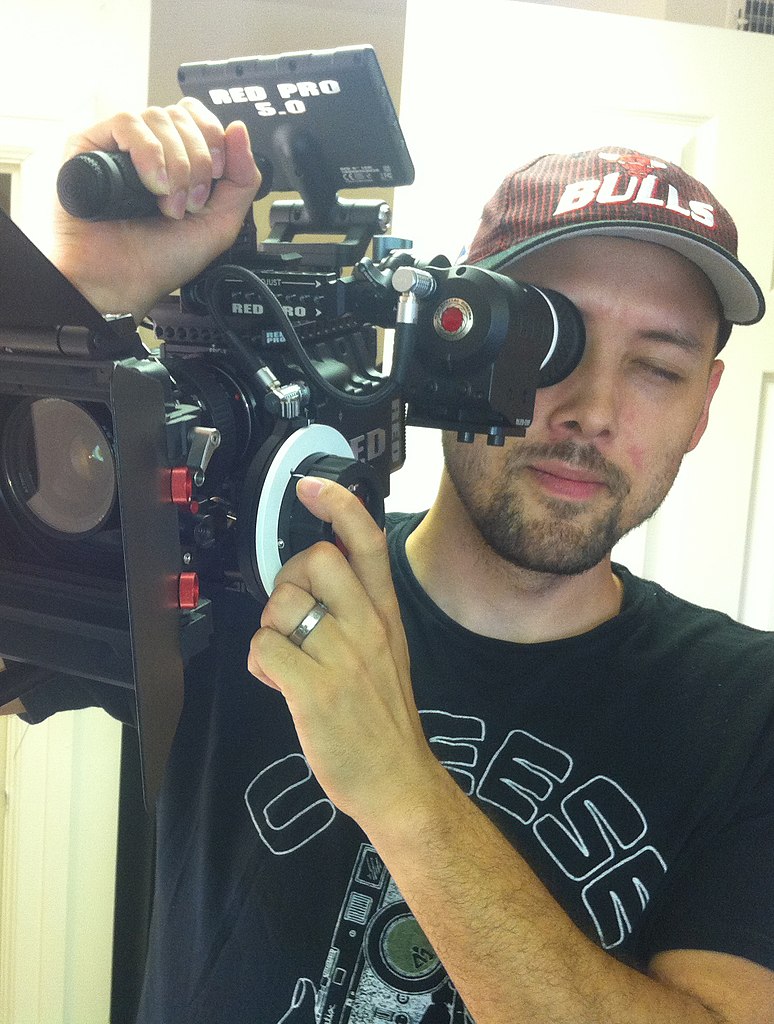 (7) 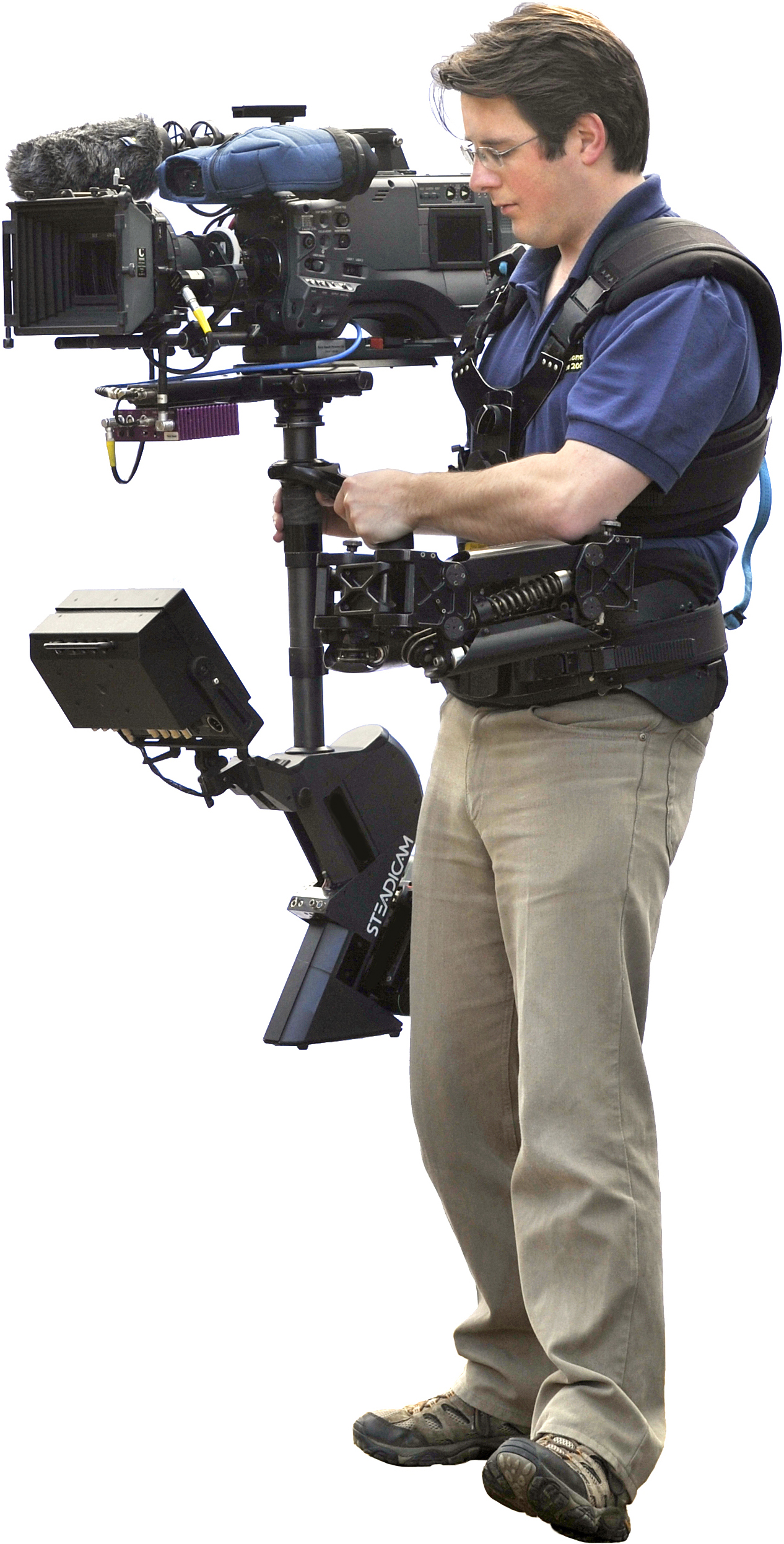 (8) |
Movement techniques and equipment In pan (panorama) mode, the camera rotates on its vertical axis, so that the frame explores space horizontally, towards left or right, with the possibility of performing a 360° circular tour. In tilt mode, the camera rotates on its horizontal axis, so that the frame can "embrace" space from top to bottom or viceversa (see an example here). It is possible combine both movements diagonally, thus obtaining oblique frames. An extremely fast pan, which connects two points in space without making intermediate frames perceptible (or making only a series of very fast horizontal lines perceptible) is called a whip pan. (See an example here, taken from Damine Chapelle's first three films). In tracking or dolly shots, the camera travels through space, moving in any direction on the ground. This produces frames which move forwards, backwards, or laterally. In this way the camera can precede characters, framing them frontally, or can follow them, framing their backs, or can also frame them laterally, moving in parallel with them (see an example here). All combinations of following shots are possible, as well as subjective pans, when the camera is perceived as the eye of a moving character. To perform this and other movemnts, the camera can be fixed on a wheeled support, which runs on tyres (dolly) or on tracks(1), on a specially designed vehicle (camera car)(2-3), or on a crane (4), from which the camera can move towards the top, the bottom o laterally. Similar effects can be obtained with the so-called louma, a mechanical arm connected with a monitor, which allows movement control (5). The camera can also shoot through a sort of periscope (snorkel keensworthy), or be attached to a plane, a helicopter or a drone (6)(sky cam). Besides, hand-held or shoulder-borne cameras (7)have been in use for several decades, as well as cameras attached to the operator's body (steadycam)(8), which use appropriate devices to ensure shooting stability and constant control through a monitor. Today, this "remote control" is made much easier by digital technology. These reframing effects can be obtained not just with the camera's physical movement, but also through lenses or special effects. For example, using a zoom lens, having a focal length which can be adjusted during a shot, the central part of a frame can be widened, flattening its planes, i.e. making them seem closer to the foreground (with a telephoto or zoom-in effect); conversely, the central portion can be narrowed, separating the planes more, i.e. spacing out foreground and background (with a wide-angle or zoom-out effect). In this way the camera remains stationary, but a pan-like effect, either forwards or backwards, is achieved. (See an example of the effects of a dolly zoom here and an example of the "zoom in/zoom out" effects here.) Optical effects can be combined too, as in the so-called pan and zoom (which Rossellini was among the first to introduce in the 1950s), which, if used as an alternative to editing to open or close a scene, allows the operator to shoot long takes (plan-séquences). (See an example from Roberto Rossellini's Il Messia (I/F 1975) here and two examples from Hitchcock's filmography here.) |
|
Infine, effetti ottici possono essere combinati con movimenti fisici della mdp, come quando lo zoom viene impiegato contemporaneamente alla carrellata, permettendo così alla mdp di muoversi nello spazio con grande libertà. Ed è rimasto famoso l'"effetto "vertigo" (dal titolo originale del film di Hitchcock La donna che visse due volte), in cui il regista, per ottenere la sensazione delle vertigini di cui soffre il protagonista, combinò la carrellata in avanti con una zoomata all'indietro.
Le funzioni del
movimento della mdp - relazionale o connettivo, se mette in collegamento due piani diversi, senza stacchi (ossia senza ricorrere al montaggio, cioè alla giunzione di due fotogrammi distinti). E' anche il caso in cui si passa dal campo al fuori campo, rendendo così visibile ciò che prima era solo ipotizzato; - cognitivo o selettivo, se si focalizza l'attenzione su un elemento di cui si vuole sottolineare l'importanza o di cui si era prima ignorata l'esistenza; - tensivo, se con un movimento lento si intende aumentare il senso di attesa o di suspense; - affettivo, specialmente se combinato con un personaggio che rivolge il proprio sguardo verso un elemento; - e, più in generale, semantico, se il
movimento serve ad aggiungere o specificare il significato di
una scena, oppure estetico, se, al contrario, esso sottolinea
le scelte artistiche e "autoriali" del regista. |
Finally, optical effects can be combined with the camera's physical movements, e.g. when the lens "zooms in" on a character, while the camera physically moves away from her/him (or vice-versa), thus allowing the camera to move through space with great freedom. This "vertigo effect" (from the title of a famous Hitchcock film) allowed the director to express the sensation of dizziness or giddiness felt by the character. The functions of camera movements Camera movements, as Bazin says in the initial quotation on this page, are never neutral, but are used with specific functions. To begin with, within mise-en-scene, the camera can move to adjust, even in nearly imperceptible ways, to the characters' movements (reframing) or can follow more clearly moving characters or objects (following/tracking shot: see an example here), or can direct the spectator's look away from or closer to some other point in space. In reframing (recadrage), the general purpose is to keep characters on screen or in a central position, thus ensuring the balance of the frame. Recadrage is the opposite of décadrage, which "empties" the centre of the frame, thus avoiding to build a true scenic space: the effect is also to move attention away from the object "looked at" towards the subject who is looking. In any case, it is important to distinguish those camera movements strictly linked to narration, which are motivated by the development of the story, from camera movements which do not add to the progression of dramatic action, and are therefore motivated by other considerations: for example, adopting a metacinema perspective, i.e. giving priority to and highlighting the very shooting mechanisms, thus prompting a reflection on the meanings and functions of the camera itself. More specifically, and following the classification suggested by Rondolino and Tomasi (*), the function of camera movements can be - descriptive, if it is used to explore the space of mise-en-scene; - relational, if it connects two different planes, without cuts (i.e. without having recourse to editing, or joining two distinct frames). This happens, for instance, when moving from on-screen to off-screen space, thus making visible what was hitherto only hypothesized; - cognitive or selective, if the attention is focused on an element whose importance needs to be highlighted, or an element whose existence was hitherto ignored; - adding tension, if a slow movement is meant to add to a sense of expectation or suspense; - affective, especially if combined with a character who directs her/his look towards an element; - and, more generally speaking, semantic, if the movement helps to add to or specify the meaning of a scene, or aesthetic, if, conversely, it underscores the filmmaker's artistic and "author"-oriented" choices. |
(*) Rondolino G., e Tomasi D. , Manuale del film: Linguaggio, racconto, analisi, UTET 2011.
 |
Per
saperne di più ... * Dal sito Cinema e Scuola: - I movimenti della cinepresa * Dal sito Cinescuola: - I movimenti di camera * Dal sito Thomas graziani Visuals: - I movimenti della macchina da presa * Video di supporto alla lezione "Movimenti di macchina" dal sito www.associazionepensieriparole.it * Dal sito Noema - Tecnologie e società: - L'evoluzione dei movimenti della mdp: dal cinema classico al digitale, a cura di Lichota Malgorzata |
 |
Want to know more? * From the Yale Film Analysis Web Site: - Cinematography - Section 4 * From the Elements of Cinema website: - Camera moves - Types of lenses - with other sections dedicated to exposure, aperture, shutter speed * From the American Film Institute Screen Education Center: - Storyboard Glossary of Common Film Shots, pp. 50-62 |
